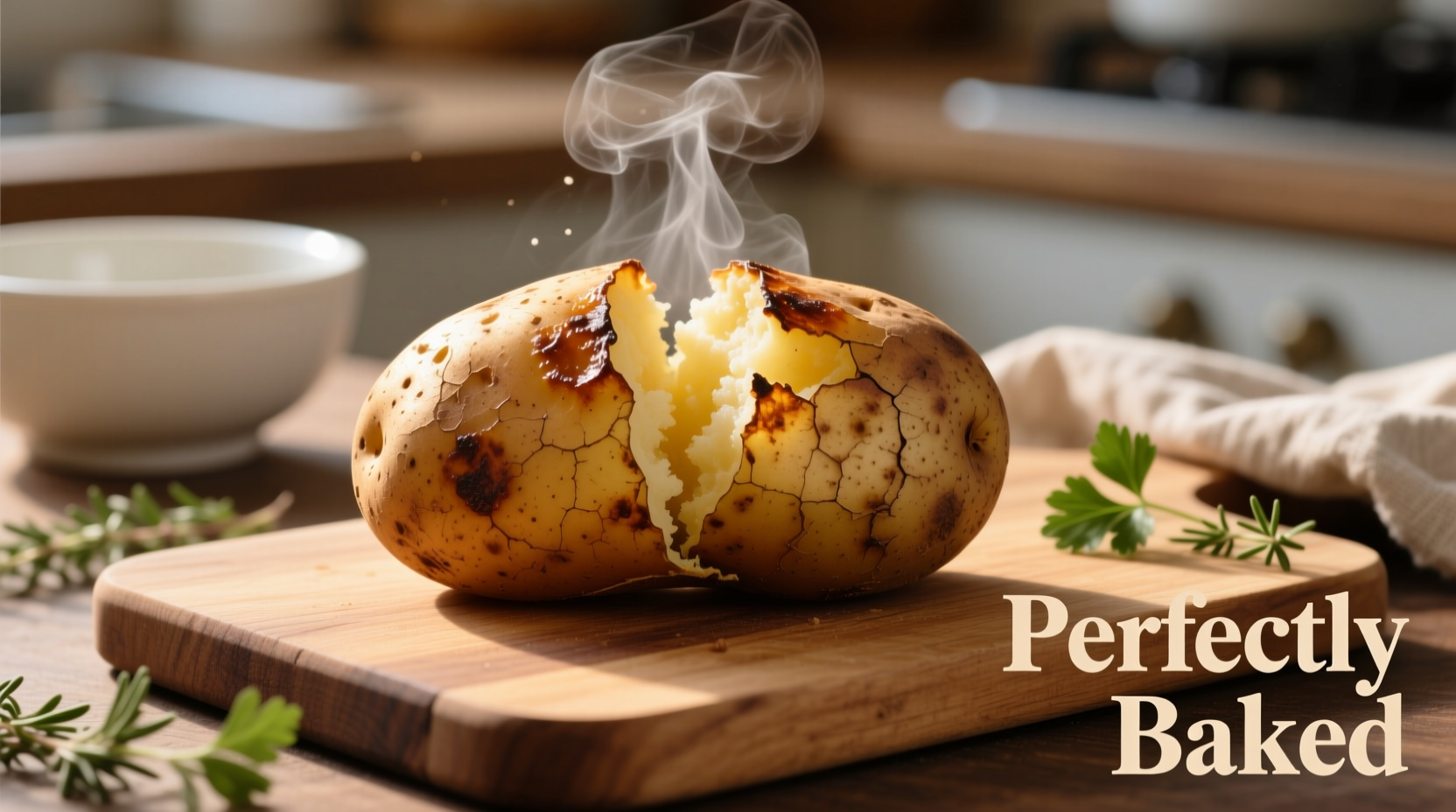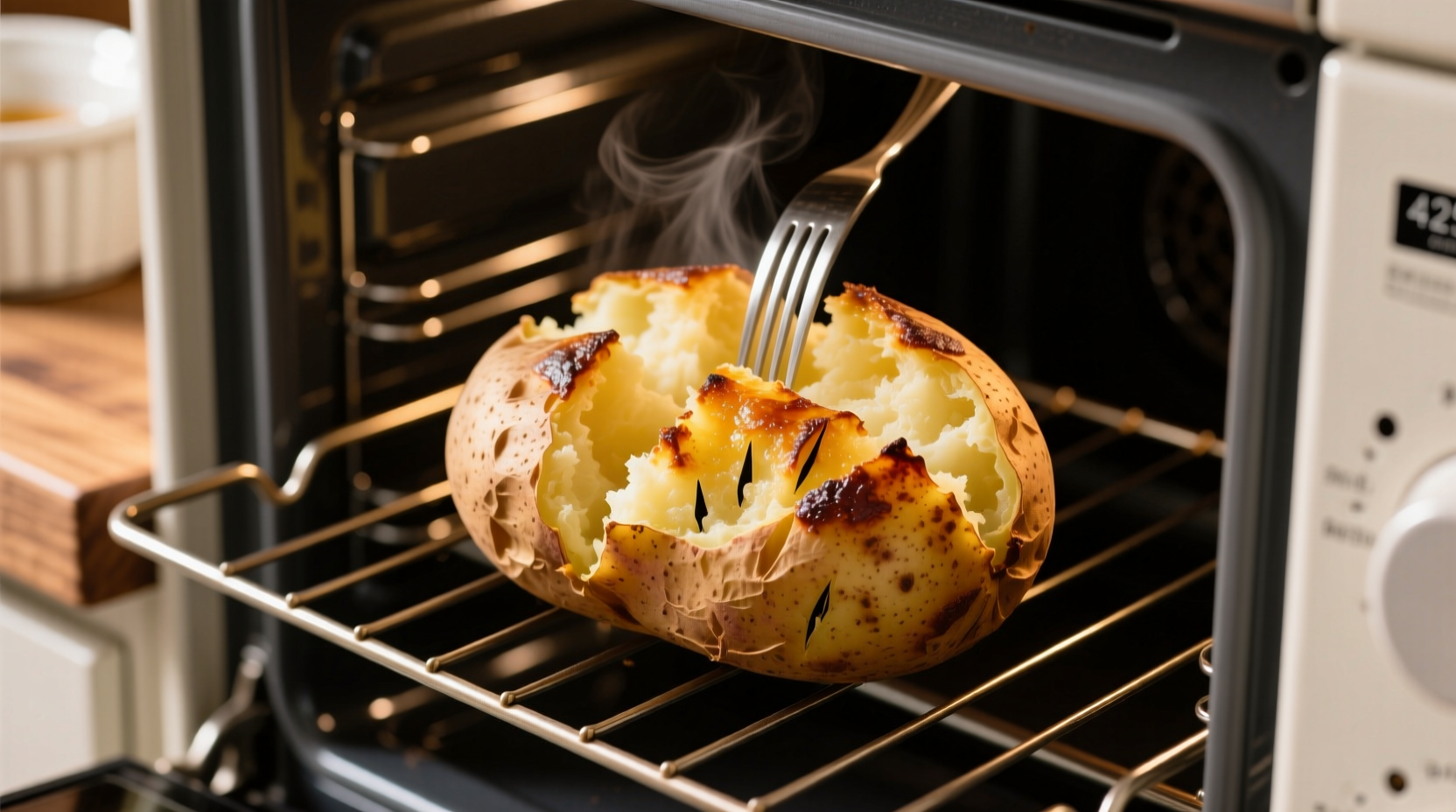Nothing beats the simple pleasure of a perfectly baked potato with its fluffy interior and crisp skin. But getting that ideal texture depends heavily on using the right oven temperature. Many home cooks make the mistake of baking potatoes at too low a temperature, resulting in dense, undercooked centers, or too high, causing burnt exteriors before the inside is done.
Why 400°F Is the Sweet Spot for Baked Potatoes
Food science explains why 400°F delivers optimal results. At this temperature, the starch granules in potatoes undergo complete gelatinization—the process where they absorb water, swell, and create that signature fluffy texture. According to research from the USDA National Institute of Food and Agriculture, starch gelatinization occurs most effectively between 392-410°F (200-210°C).
Baking below 375°F slows this process significantly, often leading to uneven cooking. Temperatures above 425°F risk burning the skin before the center reaches the ideal 205-210°F internal temperature needed for perfect fluffiness.
Step-by-Step Baking Process for Perfect Results
Follow these professional kitchen-tested steps for consistently excellent baked potatoes:
- Preparation: Scrub potatoes thoroughly and dry completely. Prick each potato 4-6 times with a fork to allow steam to escape.
- Optional enhancement: For crispier skin, rub potatoes lightly with olive oil and sprinkle with coarse salt.
- Placement: Place directly on the oven rack or on a baking sheet. Avoid wrapping in foil as this steams rather than bakes the potato.
- Baking: Set oven to 400°F (convection ovens may require 25°F reduction) and bake for 45-60 minutes depending on size.
- Doneness check: Insert a fork or skewer; it should slide in with no resistance. For precision, use an instant-read thermometer to confirm 205-210°F internal temperature.
Adjusting for Different Potato Sizes and Types
While 400°F works for most varieties, baking times vary significantly by size. The University of Minnesota Extension provides these guidelines based on potato diameter:
| Potato Diameter | Baking Time at 400°F | Internal Temp Target |
|---|---|---|
| 2-3 inches (small) | 35-45 minutes | 205°F |
| 3-4 inches (medium) | 45-60 minutes | 208°F |
| 4+ inches (large) | 60-75 minutes | 210°F |
Russet potatoes remain the best choice for traditional baked potatoes due to their high starch content. Sweet potatoes require slightly lower temperatures (375°F) and longer cooking times, while waxy varieties like red potatoes work better for roasting than traditional baking.
Avoiding Common Baking Mistakes
Even with the right temperature, these pitfalls can ruin your baked potatoes:
- Foil wrapping: Creates steam that prevents crisp skin formation and can lead to a boiled texture
- Skipping the pricking step: Can cause potatoes to burst from built-up steam pressure
- Incorrect oven placement: Potatoes directly on baking sheets take 10-15 minutes longer than on oven racks
- Underestimating resting time: Allow 5-10 minutes resting after baking for steam to redistribute
Pro Tips for Restaurant-Quality Results at Home
Professional kitchens use these techniques to ensure perfect baked potatoes every time:
- Start potatoes in a cold oven to promote even cooking from edge to center
- Place a baking sheet on the rack below to catch any potential drips
- For extra-fluffy interiors, microwave potatoes for 5 minutes before finishing in the oven
- Store-bought potatoes often have higher moisture content; extend baking time by 10-15 minutes

Serving Suggestions That Elevate Your Baked Potato
Once perfectly baked, maximize flavor with these serving techniques:
- Cut a slit across the top and squeeze the ends toward the center to open naturally
- Fluff the interior with a fork before adding toppings to help absorption
- Use room-temperature toppings (butter, sour cream) for better melting and distribution
- For loaded potatoes, add cheese first so it melts into the fluffy interior
Frequently Asked Questions
Can I bake potatoes at 350°F instead of 400°F?
Yes, but expect significantly longer cooking times (60-90 minutes for medium potatoes) and potentially less fluffy results. The lower temperature slows starch gelatinization, which can result in a denser texture.
How do I know when my baked potato is done without a thermometer?
Gently squeeze the potato (using oven mitts); it should give slightly under pressure. Alternatively, insert a fork or skewer—it should slide in with no resistance. The skin should appear slightly wrinkled and feel crisp.
Why does my baked potato have a hard center sometimes?
This typically happens when the oven temperature is too low or the potato wasn't pricked properly. The hard center indicates incomplete starch gelatinization. Ensure your oven is properly preheated to 400°F and that you've pricked the potato 4-6 times before baking.
Can I bake multiple potatoes at once without adjusting the temperature?
Yes, you can bake multiple potatoes at 400°F simultaneously. Just ensure adequate space between them for air circulation. Large batches may require an additional 5-10 minutes of baking time, but no temperature adjustment is needed.











 浙公网安备
33010002000092号
浙公网安备
33010002000092号 浙B2-20120091-4
浙B2-20120091-4